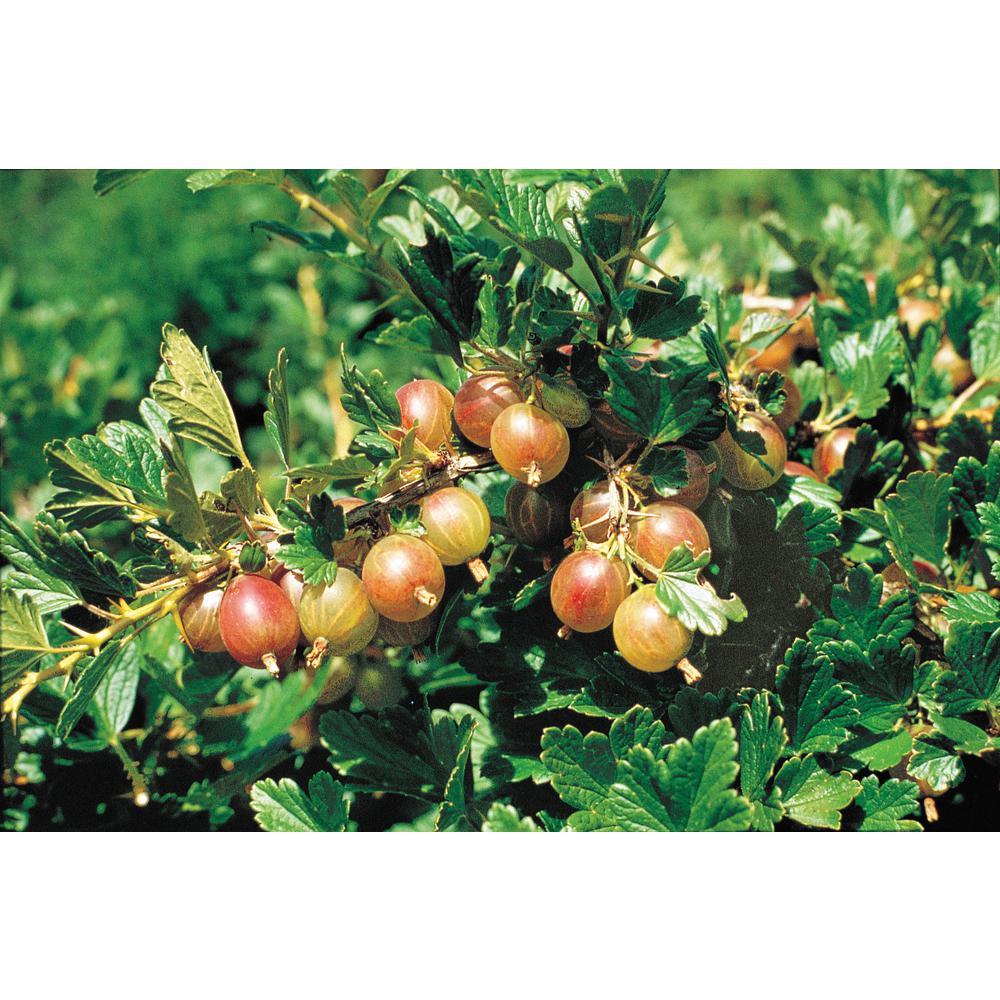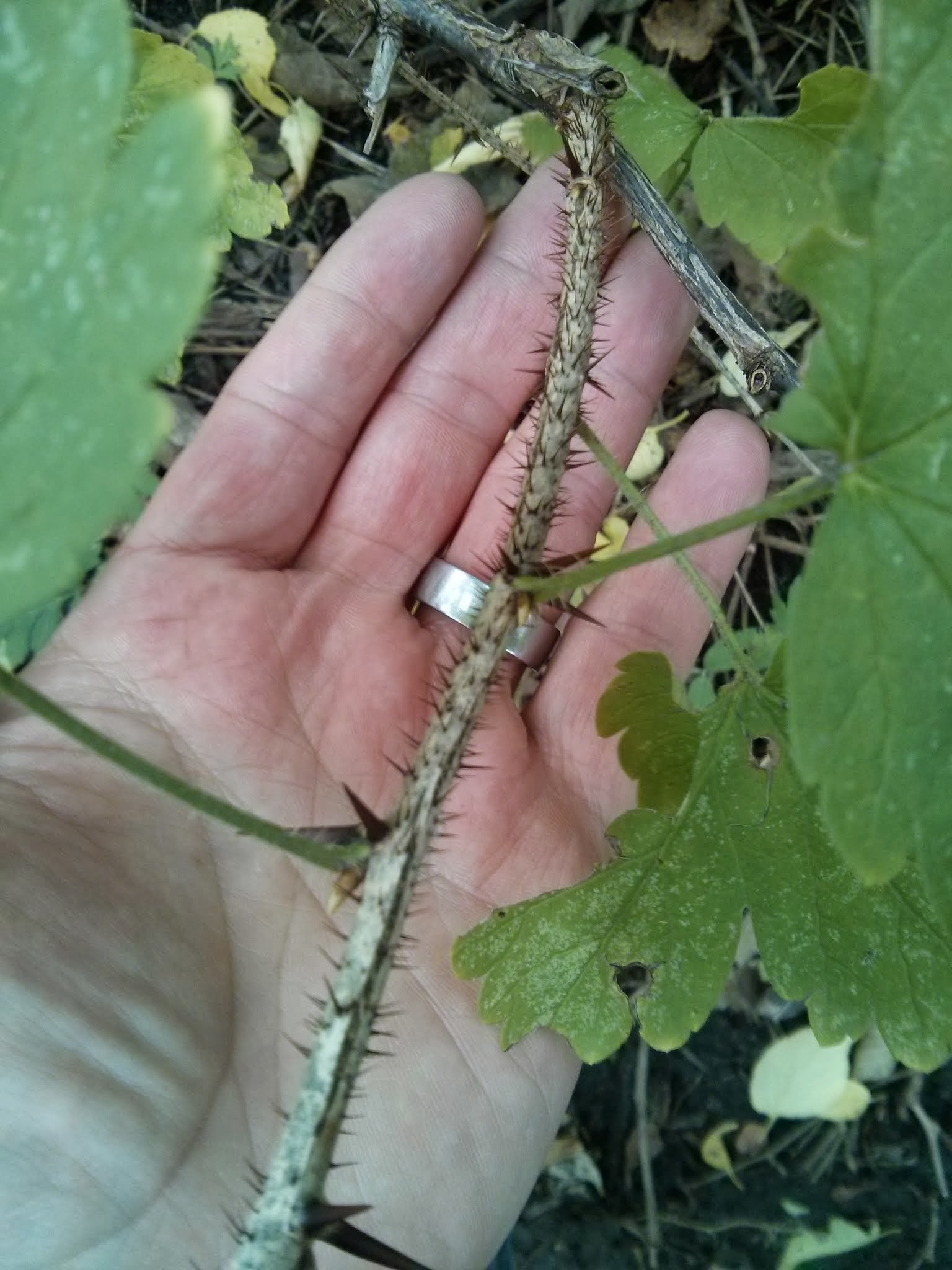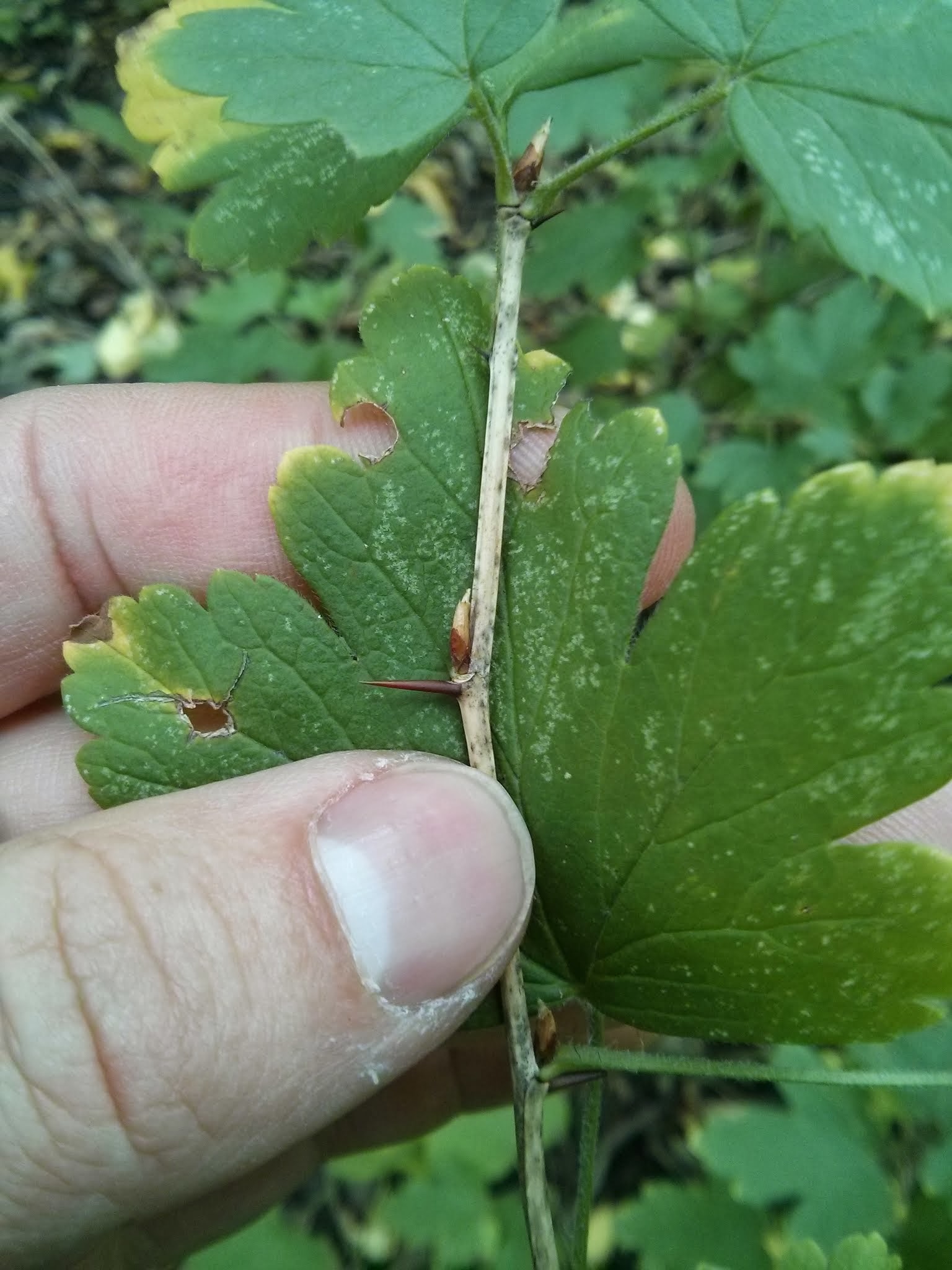Common Name: hairy-stem gooseberry, hairy-stemmed gooseberry, swamp gooseberry
Scientific Name:
Family: Grossulariaceae
Genus: Ribes
Species: R. hirtellum
Hardiness Zone: 4 to 6
Height: 3 to 4 ft
Width: 3 to 4 ft
Common Characteristics:
Hairy-stem gooseberry is a native multi-stemmed shrub. The first- and second-year stems are slender, hairless, and brown or gray in color. They become densely covered with fine bristles as they mature. The stems and branches have 1 to 2 straight spines just below the nodes. These are sometimes absent or poorly developed. The leaves are in an opposite arrangement and occur in clusters of 2 or 3. The leaf petioles are covered in soft hairs. The leaves are palmately divided and have 3 to 5 lobes per leaf. These lobes may further divide into 3 to 5 shallow secondary lobes. The upper leaf is dark green and hairless. The bottom of the leaf is pale green and slightly pubescent. The flowers hang in clusters of 1 to 3 stalked greenish-white flowers. The flowers give way to a small round fruit that ripens from green to purplish. The berries mature and are ready for picking in early July to mid-August.
Where it Grows:
Hairy-stem gooseberry can be found growing naturally in bogs, fens, forests, meadows and fields, shores of rivers or lakes, swamps, or wetland margins. They prefer full sun and moist, well-drained soils to very wet soils. This plant does not perform well when it is hot, humid, and wet.
How it's Used:
The shrub is planted in fruit or vegetable gardens. Can also be used for a hedge in a landscape for property lines or remote areas. The berries are commonly used for jams, jellies, pies, and syrups. Old, damaged branches should be pruned out in the late winter-early spring; abundant fruiting occurs on the youngest branches.
Ecosystem Services:
Birds use the berries as a food source.
Where it is Native To:
Hairy-stem gooseberry is native to the northeastern and midwestern US.
Known Varieties and Their Traits:
- R. hirtellum 'Pixwell': 'Pixwell' is a cross between Ribes 'Oregon Champion' and Ribes missouriense, released from the North Dakota Experiment Station in 1932. Very small flowers bloom in April. The pink gooseberries are ripe in July when they are tart and large.
Problems:
Leaf spots, powdery mildew, and anthracnose can occur. Aphids, mites, and scale insects can occasionally be present. 'Pixwell' is reportedly resistant to white pine blister rust (a disease that kills white pines. Ribes is an alternative host for the fungi growth cycle).
References:
Missouri Botanical Garden: Ribes 'Pixwell'


